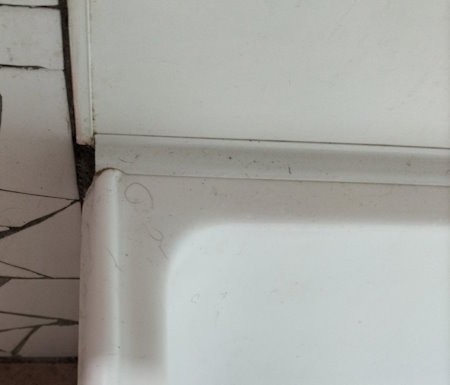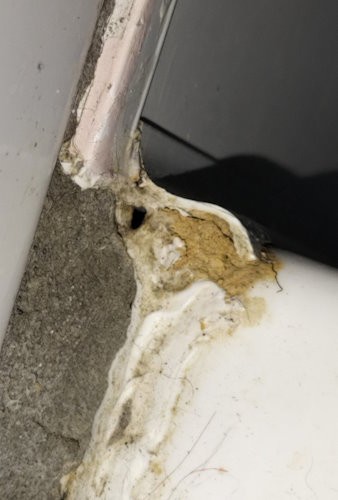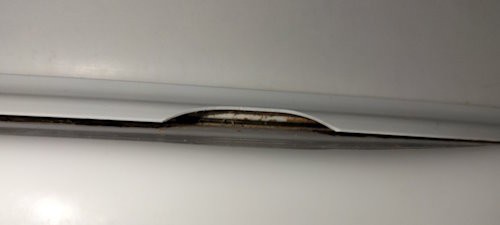The Casa de Cowboy came with a shub, which has the problem shown in the photo below. What happens after a few days of non-use is that the sealing strip around the edges separates out from the wall, leaving a gap that water can get into.

With constant shower use this isn't the case, so I assume water is getting in and causing the formica to swell up slightly, closing the gap. For reference the edge of the shub looks like this.

This gap opens up pretty much every time the shower isn't used for a few days, for example if we're away. Is this something to worry about, and if so how would I seal it? I've thought of white electrical tape over the join which would move with the sealing strip, but that's a bit of a bodge.




